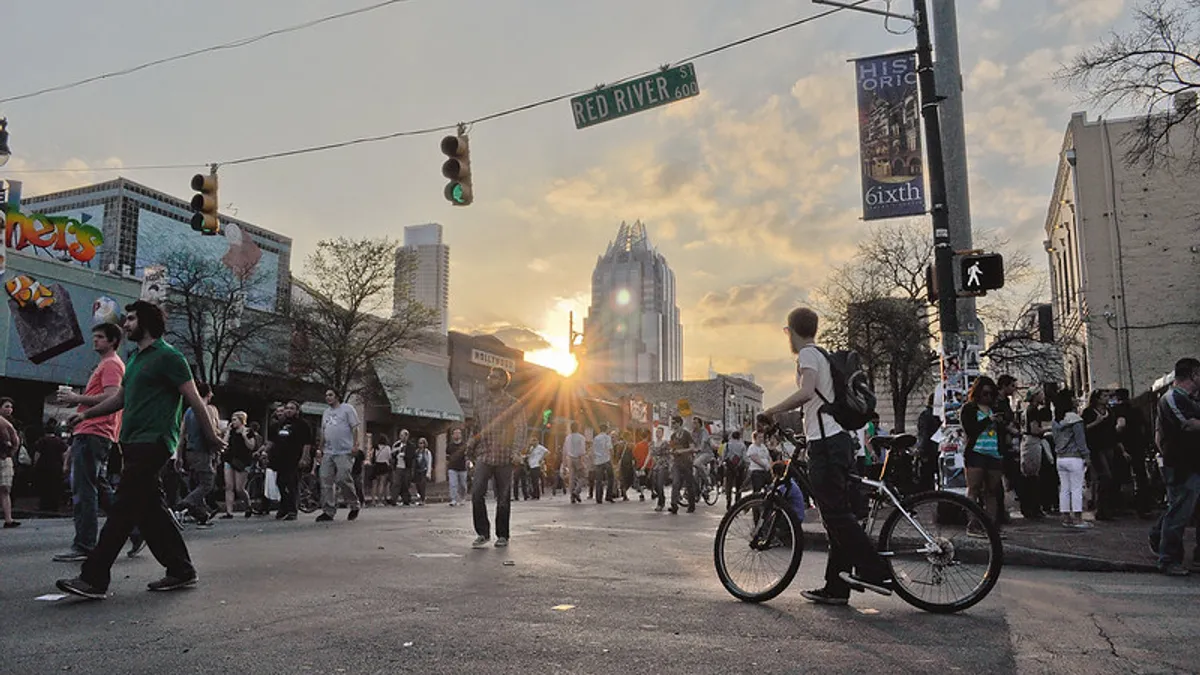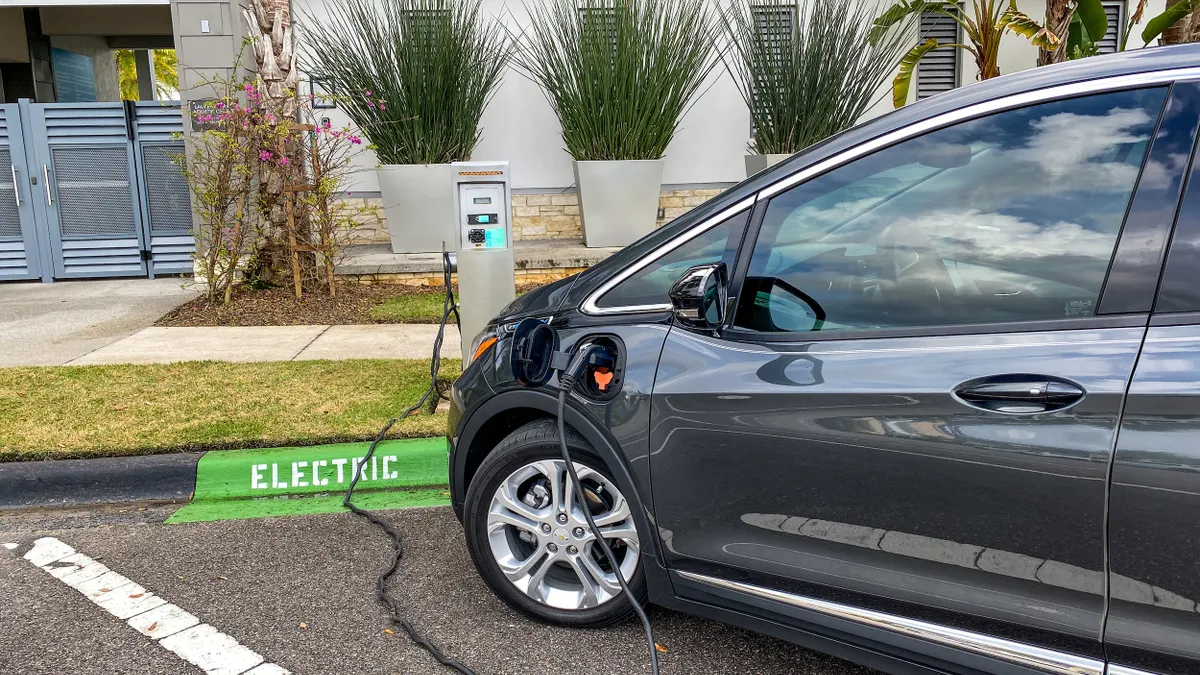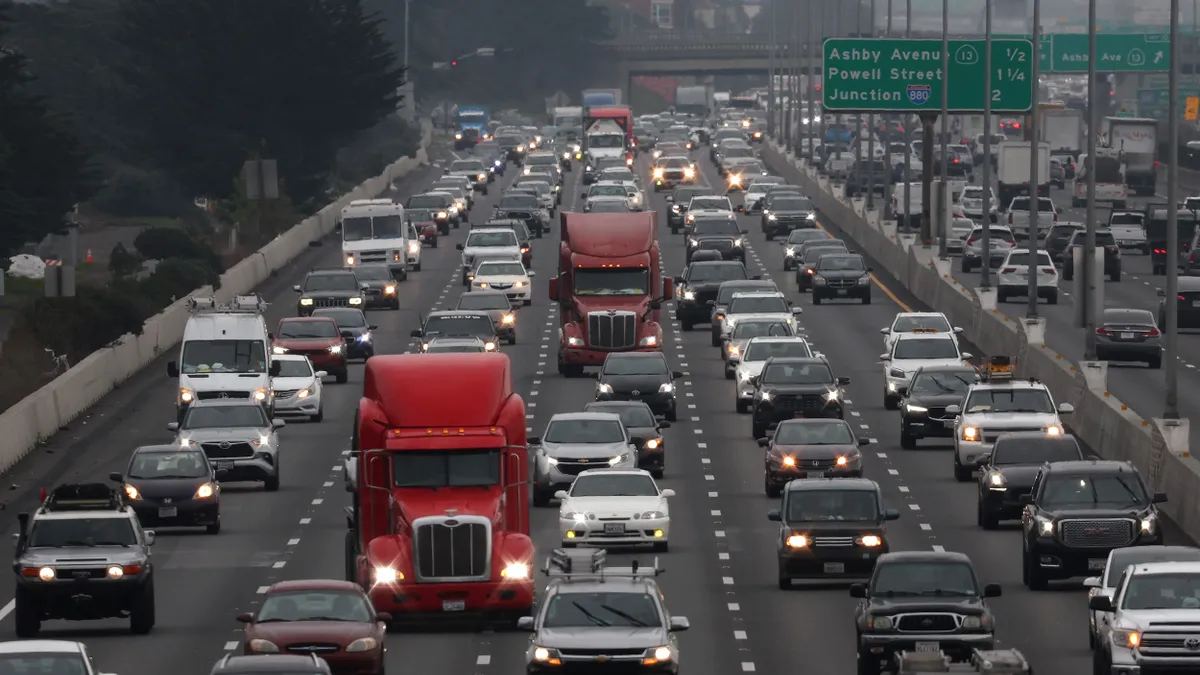The City of Austin, TX is off to a rough start for achieving its Vision Zero goals in 2020.
Austin experienced 11 traffic fatalities in the month of January — almost three times the number of traffic fatalities that occurred at the same timeframe last year. The city also experienced an increase in total traffic fatalities in 2019 after three consecutive years of declines following its adoption of Vision Zero in 2015.
Despite a number of recent road safety improvements, including new protected bike lanes and even a car-free street pilot, Austin is facing struggles that are emblematic of the challenges many cities across the country are experiencing as they work toward the ambitious goal to have zero pedestrian, cyclist or motorist deaths on their streets.
It will take time and concerted efforts to "turn the tide of problematic investment and shift our transportation system," Vision Zero Network Founder and Director Leah Shahum told Smart Cities Dive.
"Vision Zero is not a quick fix for what has been literally decades of policies and street designs that have prioritized car traffic over walking and bike safety," she said.
'It’s the speed that kills'
One of the most effective strategies to reduce traffic deaths is to lower speeds.
Vision Zero doesn’t promise zero crashes, Shahum said. But managing speeds can minimize the severity of those crashes. "It’s the speed that kills," she said.
Over 10,000 people die annually in the U.S. from speed-related crashes. In Austin, speed is the primary cause of 24% of traffic crashes that resulted in death from 2013-2017. It’s also one of the top four factors contributing to traffic fatalities in the city along with distraction, drunk driving and not yielding.
With a robust economy that supports population growth and low unemployment rates, there's a lot more activity on Austin streets, Lewis Leff, transportation safety officer with the City of Austin, told Smart Cities Dive.
"Addressing speeds on our streets is going to be a critical piece," he said.
The city has used its high-injury network to identify streets that might be prime opportunity areas to change speed limits, according to Leff. It also released a Speed Management Plan framework in 2019 with a number of traffic calming efforts that include the installation of rubber speed cushions near intersections, curb extensions and stamped concrete at medians.
On top of installing new protected bike lanes, piloting a car-free street and releasing the city’s first-ever electric buses, Austin has spent eight months building an in-house crash database that provides their most accurate, holistic view of crashes to date, according to Leff. Using that information, they are starting to hone in on the top segments of the city that have high scoring crash locations to ultimately prevent repeated instances.
Roadblocks to achieving Vision Zero
Prohibitive state regulations and a lack of political will can also pose obstacles to reaching Vision Zero. Cities are often limited at the state level about what changes they can implement in regards to speed or design, including in Texas, according to Shahum.
For that reason, there can be a disproportionate number of safety problems on state-owned roads in cities, she said. For example, the state legislature in Austin banned the use of automated cameras for red light enforcement, which can be a low-cost and highly effective safety tool used by cities including New York and San Francisco, according to Leff.
Austin's unique geography can be a challenge as well.
"People like to compare us to San Francisco or New York," Leff said "We just have a very different built environment and context to work within. Our problem is spread out over hundreds of square miles."
The city is also grappling with rapid population growth. To help support that growth with public transit, the city is collecting data on the ways that traffic moves into, out of, and through its urban core. With that information, transit leaders ultimately hope to support a 50/50 "mode split" by 2039, or have 50% of people commuting to work by car and the other half by any other transportation mode.
If there's a will, there's a way
To get past some of those hurdles, a good deal of political willpower can be required. "Anytime you try to change the status quo, there will be pushback," Shahum said.
U.S. cities can look abroad for inspiration, or even to New York, which is the longest-running city in the country to work on Vision Zero. New York has only been at work on its goals since 2014 but has invested significantly already in terms of political leadership, according to Shahum. The city has successfully reduced its traffic deaths since launching Vision Zero in 2014, but like many cities, it also experienced a spike in fatalities in 2019.
Oslo, Norway can act as a leader on Vision Zero-related efforts. The city almost achieved zero pedestrian or cyclist deaths last year; it’s only death occurred when a driver ran his car into a fence. The city credits much of its success to promoting a car-free urban life, removing 1,000 parking spaces, adding bike lanes and sidewalks, improving bike-shares and banning cars in certain areas.
Cities will need to lay similar groundwork if they want to experience the same rate of Vision Zero success. "It's not just a tagline," Shahum said. "It needs to be a real shift in how we’re making decisions on the ground."
Correction: This story has been updated to reflect the proper spelling of Leah Shahum's name and to correctly detail the geographical size of Austin, TX.




















